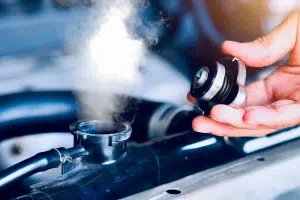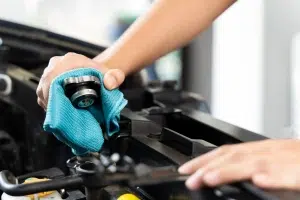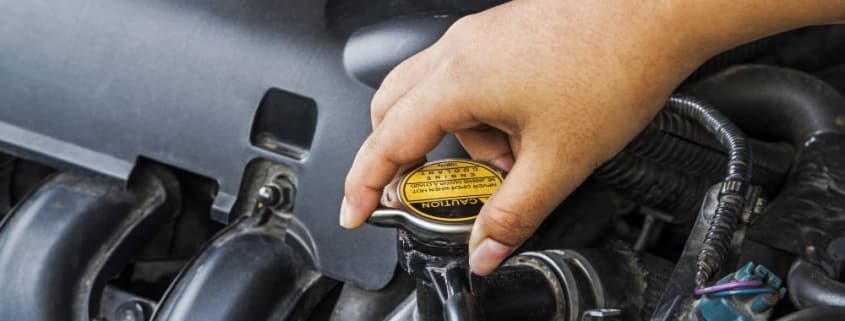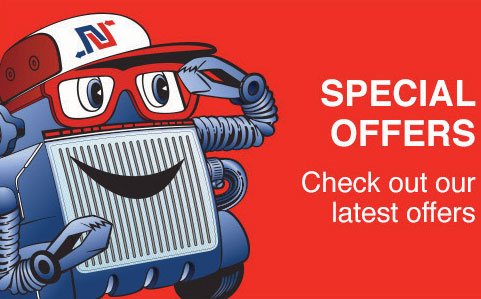Cooling system not performing – is it a bad radiator cap?
When your car’s cooling system isn’t performing as it should, the problem might not be as complicated as you think. A small but crucial component, the radiator cap, plays a big role in maintaining the system’s pressure and keeping your engine cool. If the cap isn’t working properly, it can lead to overheating, coolant loss, or reduced efficiency. So what happens if your radiator cap goes kaput? Read on to find out. Natrad’s team of highly experienced technicians can provide helpful advice about your cooling system. From specialist repair and maintenance services to quality product recommendations, Natrad has your back.
What does the radiator cap do?
What happens if your radiator cap fails? Well, a lot of things… Radiator caps are an essential part of the cooling system, and without them, your car wouldn’t function properly. The radiator cap helps raise the boiling point of coolant, prevents air from entering the system and ensures the pressurised cooling system in your car runs smoothly. Pressurised systems are commonplace in modern vehicles and are necessary for them to run at higher temperatures. A radiator cap provides the much-needed seal for a pressured system, ensuring that coolant doesn’t boil over. Especially high-performance vehicles or modified engines that require extra cooling, which is where higher pressures and, therefore, higher boiling points come into play.
Bad radiator cap symptoms
There are a few signs of a bad radiator cap. Some radiator failure symptoms may be indicative of other issues not related to your cap, so it’s important to check before diagnosing it as the culprit. Key factors may include:
- Leaking coolant: caused by worn, stuck or damaged cap, leading to a build-up in pressure. The end result is a loss of coolant.
- Burst or collapsed radiator hoses: bursting could be due to a buildup in pressure or when the vacuum isn’t released properly, causing collapse during the cooling-down period.
- Overheating at lower than usual temperatures: this could be due to loss of coolant which will no longer be able to circulate and dissipate heat through the radiator. Another reason could be the air that has entered the system.
- Overflowing reservoir: normally coolant goes into the overflow tank as it expands, to release extra pressure. If you have a bad radiator cap it may be released too quickly and cause an overflow (ironic given it’s name, we know).
- Inefficient cooling is a more subtle sign that something is wrong. It is generally caused by ineffective sealing and could eventually lead to overheating.
If you notice any of these signs, Natrad can inspect your cooling system, diagnose problems, and provide expert advice on what to do next.
Effects on your cooling system
Without the cap, modern cooling systems wouldn’t be able to perform as they do today. If the cap fails, you could be facing some pretty hefty trouble. Most of the signs and symptoms above lead to a few key problems:
- Loss of coolant, leading to overheating
- Overheating and breaking down
- Damage to cooling system components
- Part failure in extreme cases (e.g. radiator)

Checking your radiator cap
Inspecting your radiator cap is a straightforward process, but it’s important to prioritise safety. Always wait for the engine to cool completely before opening the radiator to avoid high-pressure steam or hot coolant, which can cause severe burns. Once it’s safe to proceed, here’s what to look for:
- Visible Damage:
- Check for obvious signs of wear, such as corrosion, cracks, or residue buildup on the cap.
- Look closely at the seal and gasket for any breakage or degradation, as these parts are critical for maintaining proper pressure.
- Potential Causes of Failure:
- Worn-out seals or gaskets can occur over time due to age or frequent use.
- Corrosion or residue may result from exposure to coolant or other contaminants.
- Physical damage could be caused by improper handling or external impact.
If you notice any of these issues, it’s likely time for a replacement. A faulty radiator cap can compromise your cooling system’s performance, so addressing the problem promptly is essential.
When should I replace my radiator cap?
Knowing when to replace your radiator cap is crucial for maintaining your vehicle’s cooling system. Signs of a bad radiator cap may include coolant leaks around the radiator and coolant reservoir. A faulty cap can prevent the system from properly pressurising, leading to air in the cooling system and the formation of air pockets. This disruption can cause the engine to overheat, even if the engine’s thermostat is functioning correctly. When inspecting your car radiator, look for white streaks or other signs of coolant from leaking, as these may indicate that the radiator cap is damaged or cap is faulty. If the radiator cap works effectively, it will maintain the boiling point of the coolant and prevent the engine from overheating. If your engine is still overheating after checking for leaks and other replacement parts, it’s wise to consider that the radiator cap itself may need replacing.

Choosing a replacement radiator cap
If the radiator cap has indeed failed, you’ll need a new one. It’s important to choose the right cap, as the pressure will be individual to your system. A good way to ensure you have the right cap is to see what pressure rating your previous one had or check your owner’s manual for manufacturer specifications. Typically, you won’t need to replace a radiator cap very often, but it’s recommended that you do so every five years to prevent issues from popping up.
Get your radiator cap replaced at Natrad
Don’t let a faulty radiator cap compromise your car’s performance. At Natrad, we offer high-quality replacement parts and expert service to keep your cooling system in top shape. Visit your nearest store today and let our experienced team help you find the right solution for your vehicle’s radiator. Stay cool and drive with confidence—choose Natrad!









